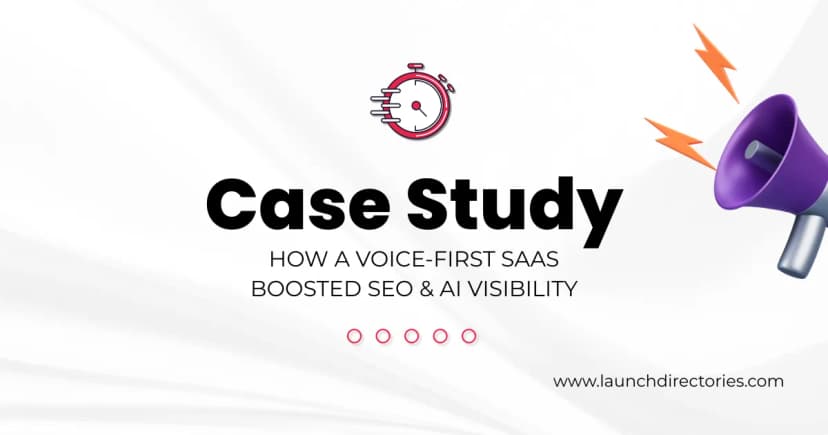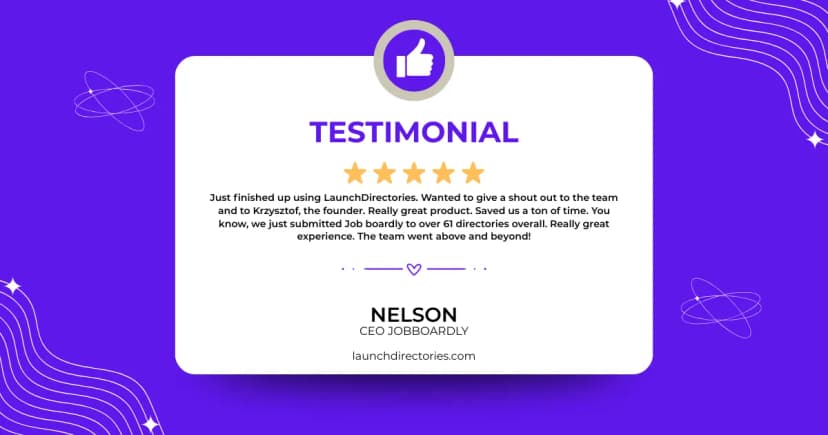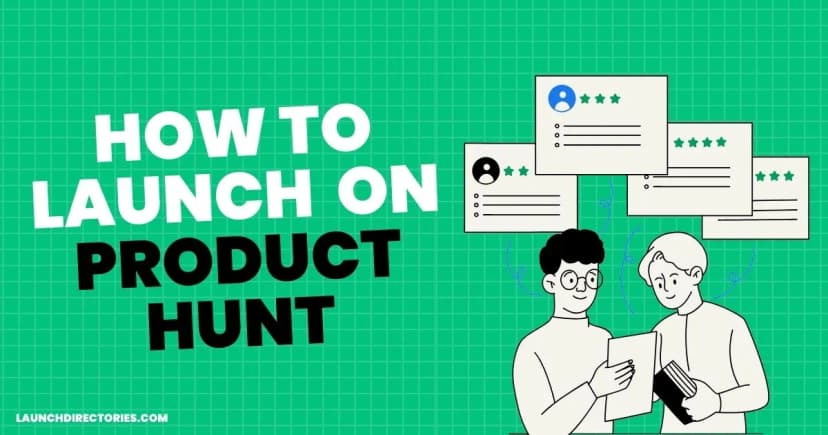
If you are a solo founder, the right product hunt launch can deliver feedback, early users, and social proof in a single 24 hour window. This guide gives you a practical, lean playbook you can run without a team. You will learn how the homepage leaderboard really behaves, which assets move the needle, when to go live, how to drive ethical engagement, and what to do after the dust settles. The goal is not to chase vanity metrics. The goal is to generate conversations that convert into signups, trials, or sales. You will find a 30 day warm up calendar, a launch day checklist, and templates you can copy. You will also see where distribution outside Product Hunt compounds results so your hard work keeps paying off. By the end, you will have a clear strategy to run a product hunt launch that fits an indie maker’s constraints while maximizing upside.
Set goals the indie way
Before you plan assets or outreach, pick one primary conversion goal that you can measure within 7 days. Examples include 200 qualified waitlist signups, 100 free trials started, 30 paid upgrades, 20 discovery calls booked, or 50 high quality survey completions. Tie every decision to this goal. The temptation is to optimize for upvotes. Resist it. Upvotes are a proxy for reach, not success. Comments, reviews, and meaningful conversations are stronger leading indicators that your positioning resonates. When you optimize for conversion first, you naturally write clearer taglines, design better visuals, and ask smarter questions. This mindset also reduces launch anxiety because you are not trying to win everything. You are shipping a focused experiment with a clear outcome.
How Product Hunt works for makers
Product Hunt is a daily competition where new products go live, collect votes and comments, and compete for visibility on the homepage. Because the ranking resets at the start of a new day, timing and early momentum matter. You can schedule your post so you do not need to be awake at midnight Pacific time. Product Hunt’s official guide also clarifies key rules that trip up first time makers. You do not need a famous hunter. You should not ask for upvotes directly. You should ask people to visit, try the product, and share feedback in comments. The same guide recommends 12:01 am Pacific as the best time if you want the full day’s exposure.
A 30 day warm up plan for solo founders
Treat your launch as a month long campaign that culminates in one intense day. You do not need a big audience to run this play. You need small, warm circles that care about the problem and are willing to talk about it. Use this calendar to build momentum without spamming anyone.
30 day pre-launch calendar
This plan keeps you focused on conversations, screenshots, and a crisp demo. It also reduces last minute scrambling, which kills indie launches more often than weak products.
Build the assets that actually convert
You do not need a huge media kit. You need a few high leverage pieces that make it easy for strangers to get it in seconds.
Tagline that promises a clear outcome. 50 to 60 characters is a helpful constraint. Front load the outcome before the how.
Gallery that tells a simple story. Use 3 to 5 images in a narrative arc: problem, key feature, result, proof. Avoid text heavy slides.
Short demo video. Thirty seconds with captions is enough. Show the workflow, not a talking head.
Maker comment. This is your product’s story in your voice. Include a one sentence problem statement, the aha moment, what is live today, what is coming next, and a single question that invites feedback.
FAQ snippet bank. Prewrite 10 answers for pricing, roadmap, integrations, privacy, security, and support.
Social proof. Add 3 tight quotes from beta users or early customers. Use names and roles when you have permission.
A lean bundle like this respects your time while supporting conversion on and off Product Hunt. It is also simple to repurpose to your website, directory submissions, and emails.
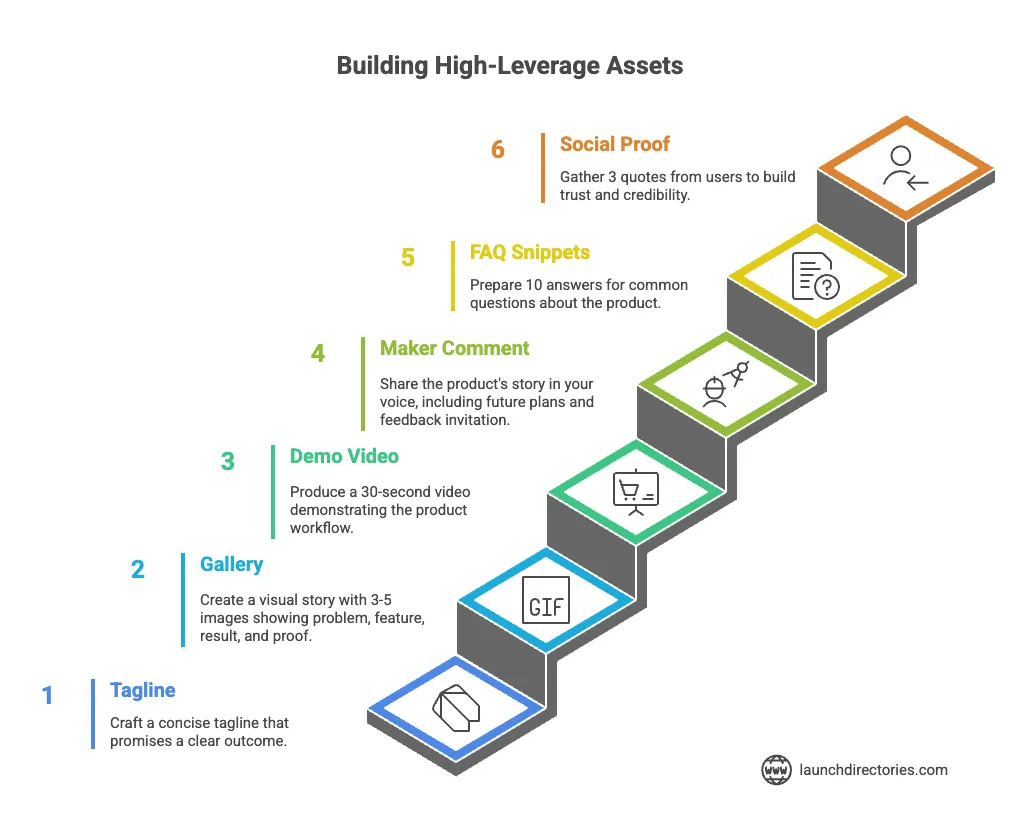
Positioning that sticks in a crowded feed
A product hunt launch happens inside a noisy stream where each card gets a few seconds of attention. Precise positioning matters.
Focus on the job, not the features. Name the job-to-be-done in your tagline and first image.
Contrast status quo vs new way. Use one sentence to show the time or money saved.
Speak like a human. Write short sentences. Replace jargon with verbs. Avoid cleverness that obscures the benefit.
Ask one specific question in your maker comment. Questions like What is unclear in our pricing page are better than What do you think.
Timing, scheduling, and the daily reset
Your launch competes over a 24 hour period. If you want the full window, schedule your post for just after midnight Pacific time. This gives you morning hours in North America and useful overlap with Europe and Asia. The official guide confirms that 12:01 am Pacific is the ideal default if your schedule allows. It also clarifies that you can self post and that the platform encourages you to ask people to try and comment rather than ask for upvotes. If you are constrained by time zones, schedule for the earliest time you can be present for the first 6 hours. Presence beats perfect timing when you are solo.
Outreach that respects the rules and builds trust
The fastest way to sink a launch is to spam your network with upvote requests. Product Hunt explicitly asks you not to do that. The safe and effective approach is to invite people to try the product, then leave honest comments or reviews if they find it useful. These conversations teach you which benefits resonate and which objections block adoption. They also raise the quality of your launch page because real questions surface gaps in your copy.
Here is a simple message you can adapt for day-of outreach:
Hey Ana, I am launching X today. You told me onboarding was your biggest pain. Would you try the demo and tell me where it breaks for you. If it helps, I would appreciate an honest comment about what worked and what did not.
This focuses on value and feedback instead of vote fishing. It also keeps your account safe and builds goodwill for future releases.
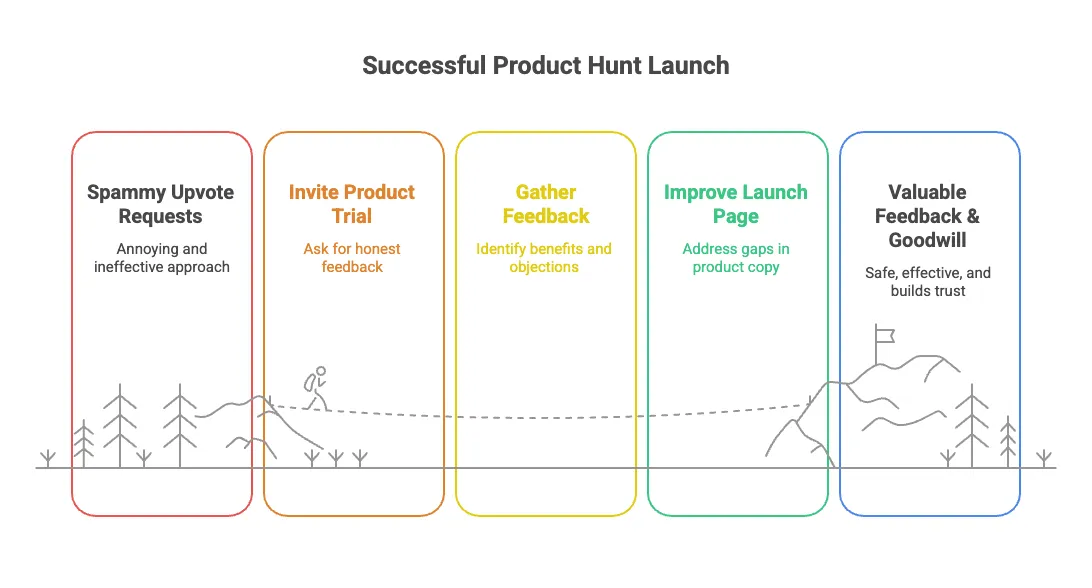
The ethical SEO layer around your launch
A good launch page drives traffic to your site. Use that spike to earn durable organic benefits. Make sure your landing page loads fast, explains the value clearly above the fold, and has one primary call to action. Avoid manipulative link tactics or schemes in a rush to capitalize on attention. Google’s spam policies explicitly call out buying or selling links and other attempts to manipulate rankings. You do not need these to win. Earn links by publishing your story, writing a short teardown of your lessons, and submitting to reputable directories that welcome maker content.
Create a lightweight measurement plan
Track only what you can act on in the next week. For most indie launches, that means:
Referral traffic from the Product Hunt listing to your site
Signups, trials, or purchases attributed to launch day and the next 7 days
Comment volume and the top 3 themes from questions or objections
Conversion by asset, such as click throughs on the hero GIF or demo video
Set up one spreadsheet with hourly checks for the first 12 hours, then morning and evening checks after. If a metric is not tied to a decision, do not track it.
Launch day: a simple, repeatable checklist
Use this checklist to stay calm and effective.
Hour 0-1
Double check the page. Read the tagline aloud. Scan images at 100 percent and mobile sizes. Test every link.
Post your maker comment and pin your FAQ thread.
Share your first social post and your first email to Segment A. Keep it short.
Hour 1-3
Reply fast to every comment. Ask one follow up question in each thread. Thank people by name.
DM 10 champions who said they would try it. Repeat your respectful ask to try and comment.
Share a behind the scenes post that shows the story behind the product.
Hour 3-6
Post 2 quick product tips as comments on your own page. Keep them helpful and short.
Share 2 short testimonials as images. Credit the person who shared them if you have permission.
Send your second email to Segment B with a different hook.
Hour 6-12
Record a 30 second pattern break video that shows a niche use case.
Create a thread summarizing the top 5 questions and your answers.
DM 5 friendly makers launching that day. Congratulate them. Community goodwill matters.
Hour 12-24
Share a gentle reminder post with a screenshot of a helpful comment.
Send your final email to Segment C.
Draft your post-launch recap while the details are fresh.
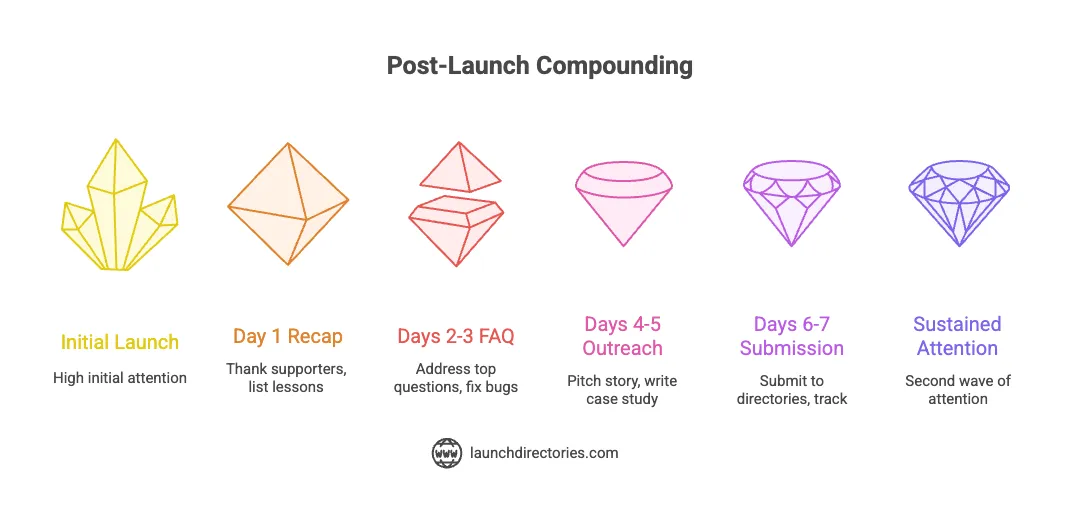
Commenting and reviews that convert
Comments are not only a ranking signal. They are an onramp to trial and to word of mouth. Ask specific questions to guide useful discussion. Commit to replying within minutes during your first 6 hours. As you collect reviews, remember that credible social proof drives conversion far more than generic praise. Academic research from the Spiegel Research Center found that the presence and volume of reviews can significantly increase purchase likelihood, with impact moderated by price and star rating. The credibility effect peaks at moderate to high ratings rather than perfect scores. Use this insight to invite honest reviews and to embrace constructive feedback.
Post-launch compounding: 7 day plan
You will learn more on launch day than you expect. Turn that attention into durable assets.
Day 1 recap
Publish a short thread that thanks supporters and lists 3 lessons.
Add a link to your launch page on your site’s press or changelog page.
Day 2-3
Turn the top 5 questions into a FAQ section on your landing page.
Create a 2 minute loom that addresses the most confusing workflow.
Ship the smallest fix that unblocks the most people.
Day 4-5
Pitch one story to a niche newsletter or community that cares about the problem you solve.
Write a micro case study on a beta user who saw a real result.
Day 6-7
Submit your product to a small set of reputable directories where your category fits. Prioritize quality over quantity and track each submission with status, DR, and link type so you can follow up later.
If repetitive submissions drain you, consider a managed submission service so you can stay focused on product and customers.
This prevents the typical post-launch dip and gives you a second wave of attention.
with 100+ Directory Listings
Skip the grind. We'll submit your product to top directories so you get real users, feedback, and lifetime backlinks without lifting a finger.
Common pitfalls and how to avoid them
Launching without a warm base. Even 15 people who know what you are building makes a huge difference.
Chasing hunters. Self posting is fine. Spend the time polishing your assets instead.
Misusing CTAs. Ask for feedback and comments, not upvotes. You will get better conversations and stay within the rules.
Overbuilding the page. Five strong images beat ten average ones. One clear demo beats a long walkthrough.
Ignoring onboarding. If the first run experience is bumpy, you will waste the attention you fought to earn.
Going quiet after 4 hours. Many people discover your page later. Keep replying and updating.
Templates you can copy
Maker comment outline
Opening line: The problem in one sentence
Why now: Trigger or insight that led you to build it
What is live: The 3 highest impact features today
What is next: One short roadmap item or integration
Ask: One question you want feedback on
Personal DM for champions
Context: I am finally shipping X
Promise: This solves the Y pain we talked about
Ask: Try the demo and leave a comment about what worked and what did not
Gratitude: Thank you for helping me improve this
Reply to tough feedback
Thanks for sharing this
I agree that Z is confusing and we are working on a change
I will DM you to confirm the use case so we get it right
I will post an update in this thread once it is live
These keep the quality of conversation high and make it easy to respond fast.
A lightweight analytics and feedback loop
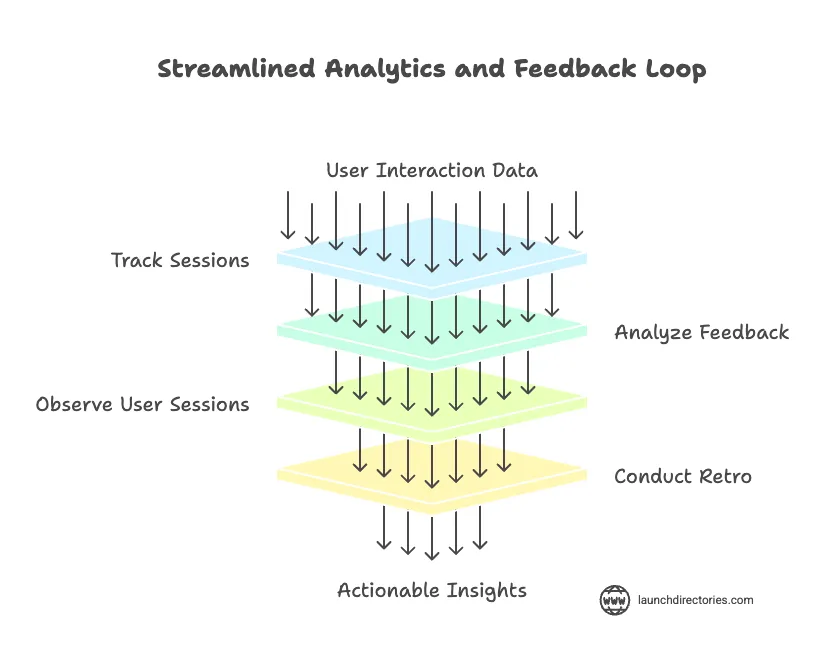
For solo makers, the simplest system wins.
Track hourly sessions, signups, and conversion rate during the first 12 hours, then daily for 7 days.
Tag comments by theme and count frequency. Prioritize fixes by frequency and impact on activation.
Record 3 five minute user sessions with permission. Watch where they slow down or bounce.
Write a one page retro on day 7. Include what to repeat, what to cut, and one experiment for next time.
Simple rhythms create progress you can sustain.
Where distribution compounds outside Product Hunt
Your listing is a catalyst, not a finish line. Repurpose your assets into a short announcement for your website, a post for your changelog, and a mini case study. Submit your product to a focused set of startup directories and communities where buyers browse alternatives. Look for a mix of high authority platforms and niche communities where the audience fits your category. Track dofollow or nofollow status, but do not obsess over it. What matters most for indie founders is targeted visibility and referral clicks. If you want speed without the grind of one by one forms, use a managed submission workflow so you can keep building while your distribution grows.
Quick FAQ for indie makers
Do I need a big audience to have a good launch?
No. You need a small group of engaged people who care about the problem and will share thoughtful comments.
Is it worth launching if my product is early?
Yes if you have a usable slice that delivers a real outcome. Be transparent about what is in and what is coming next.
Should I chase press?
Not for the first launch. Focus on conversations and signups. Publish a clear recap so press can find you later.
What if I do not hit the leaderboard?
You can still meet users, learn, and grow. Winning the day is nice. Winning customers is better.
Can I launch again?
Yes. Launch meaningful iterations when you can deliver new value and a fresh story.
Conclusion and call to action
A successful product hunt launch is built on conversations, not hacks. You need a clear promise, an honest story, tight visuals, and the presence to engage for a day. You also need a simple plan to capture and compound the attention after. Run the 30 day warm up, ship a small set of high quality assets, schedule for the daily reset, and invite real feedback. Use the momentum to submit to reputable directories and communities so your reach grows beyond a single day. If you would like a hand with directory submissions and backlink building while you stay focused on your product, consider a trusted manual submission service that targets 100 plus directories with quality control. Ship, learn, and keep iterating. Your next launch will be even better.Ready to Build High-Quality Backlinks?
We'll submit your product to 100+ directories and build valuable backlinks for your SEO.
